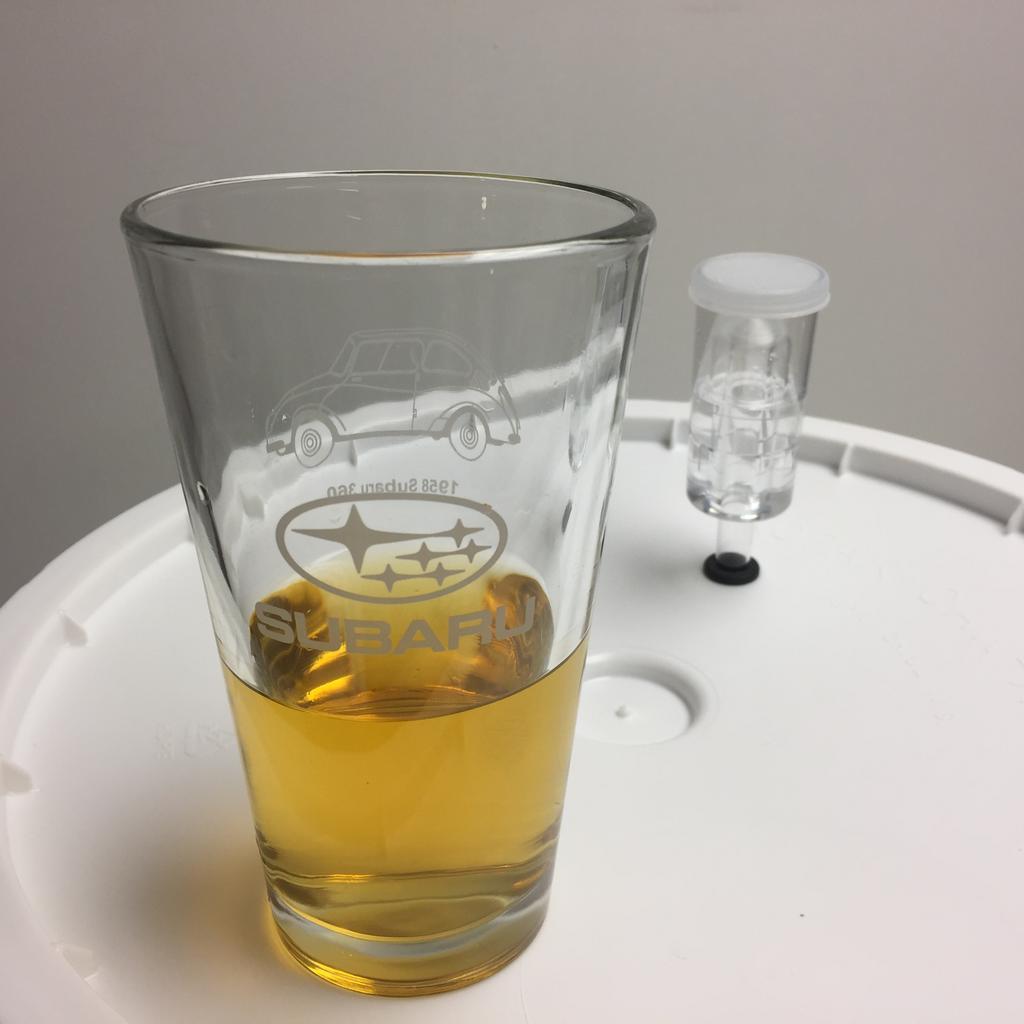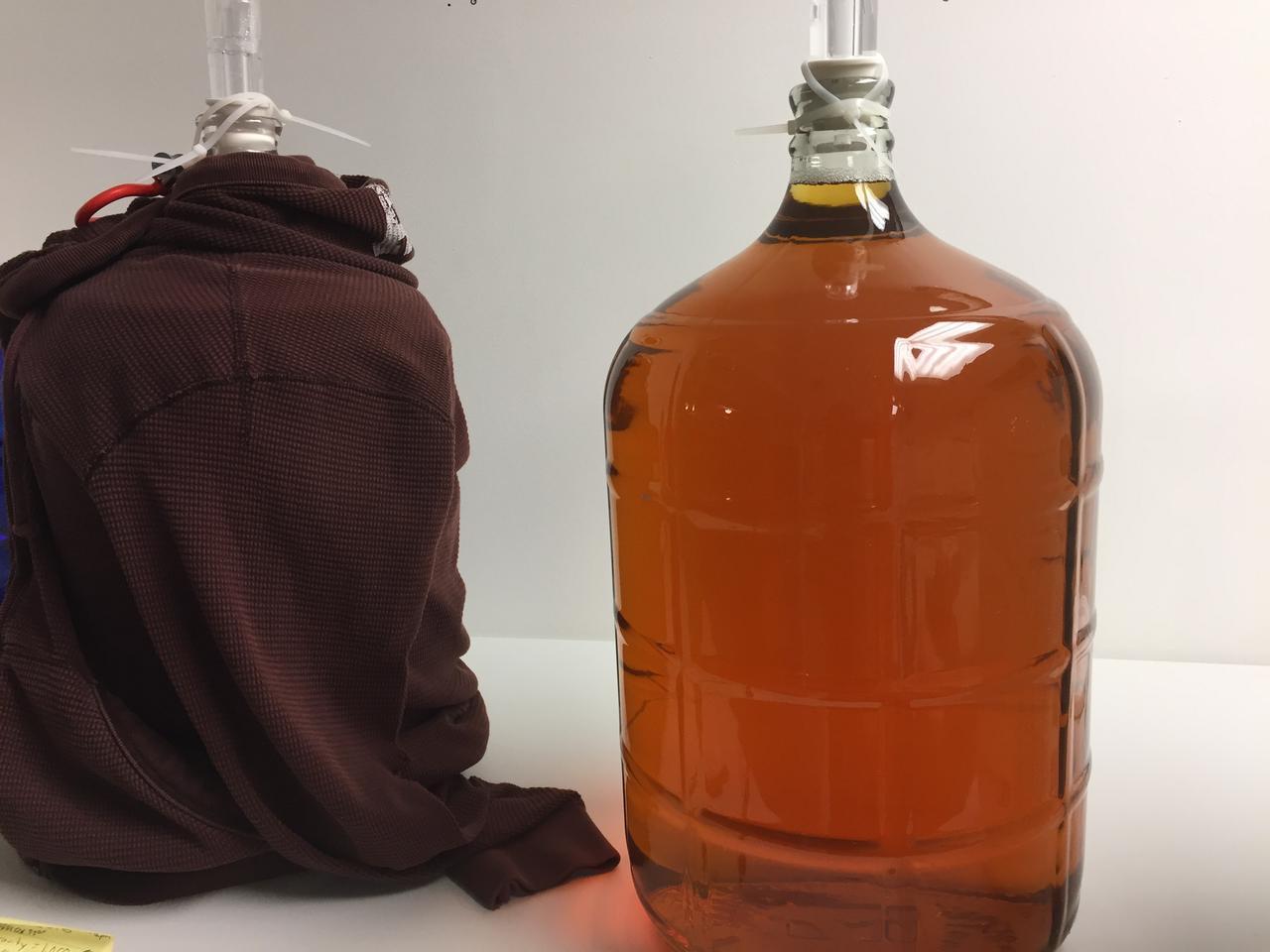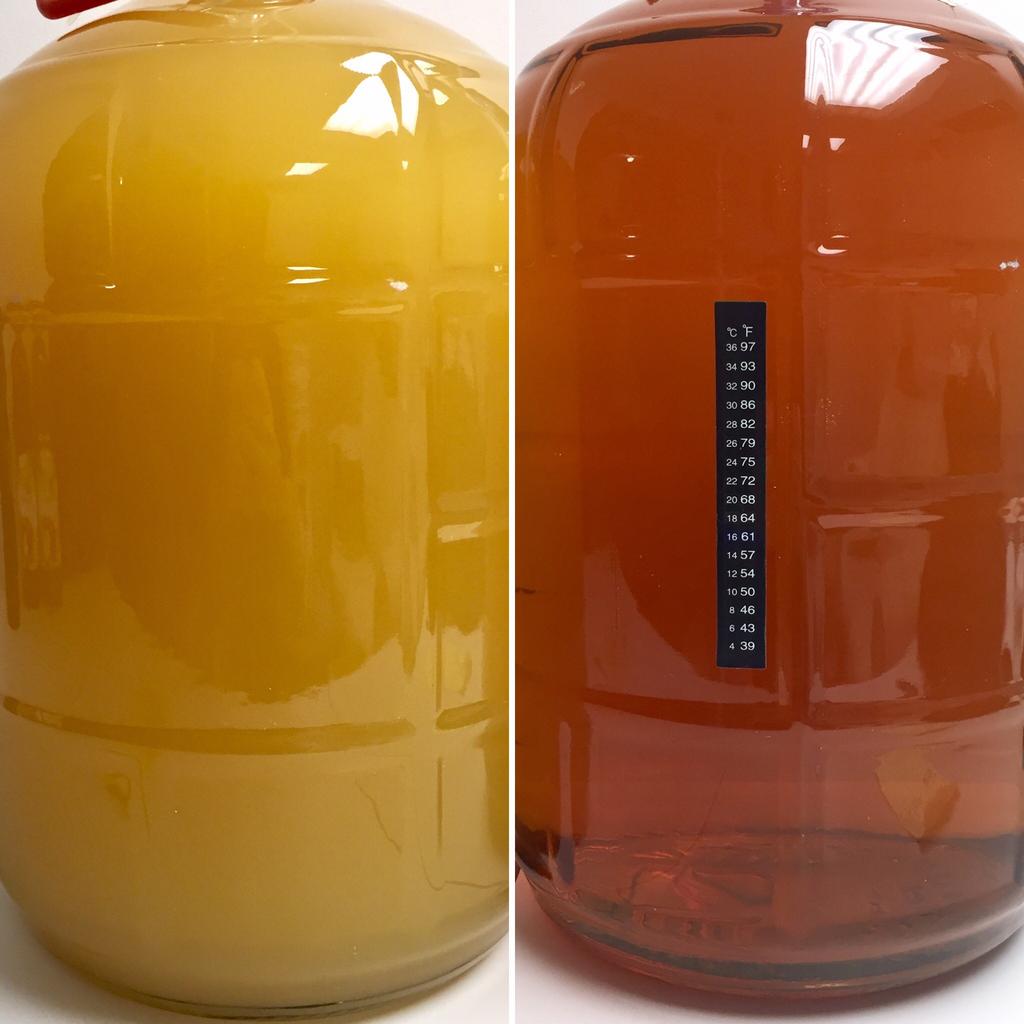I started my first batch of cider in Early November 2016 and racked it to secondary on Jan 1, 2017 with a measured gravity of .996. I did add a little bit of apple juice to take up some head space but it's been left alone since.
It's appearance today is basically the same as when I racked it:
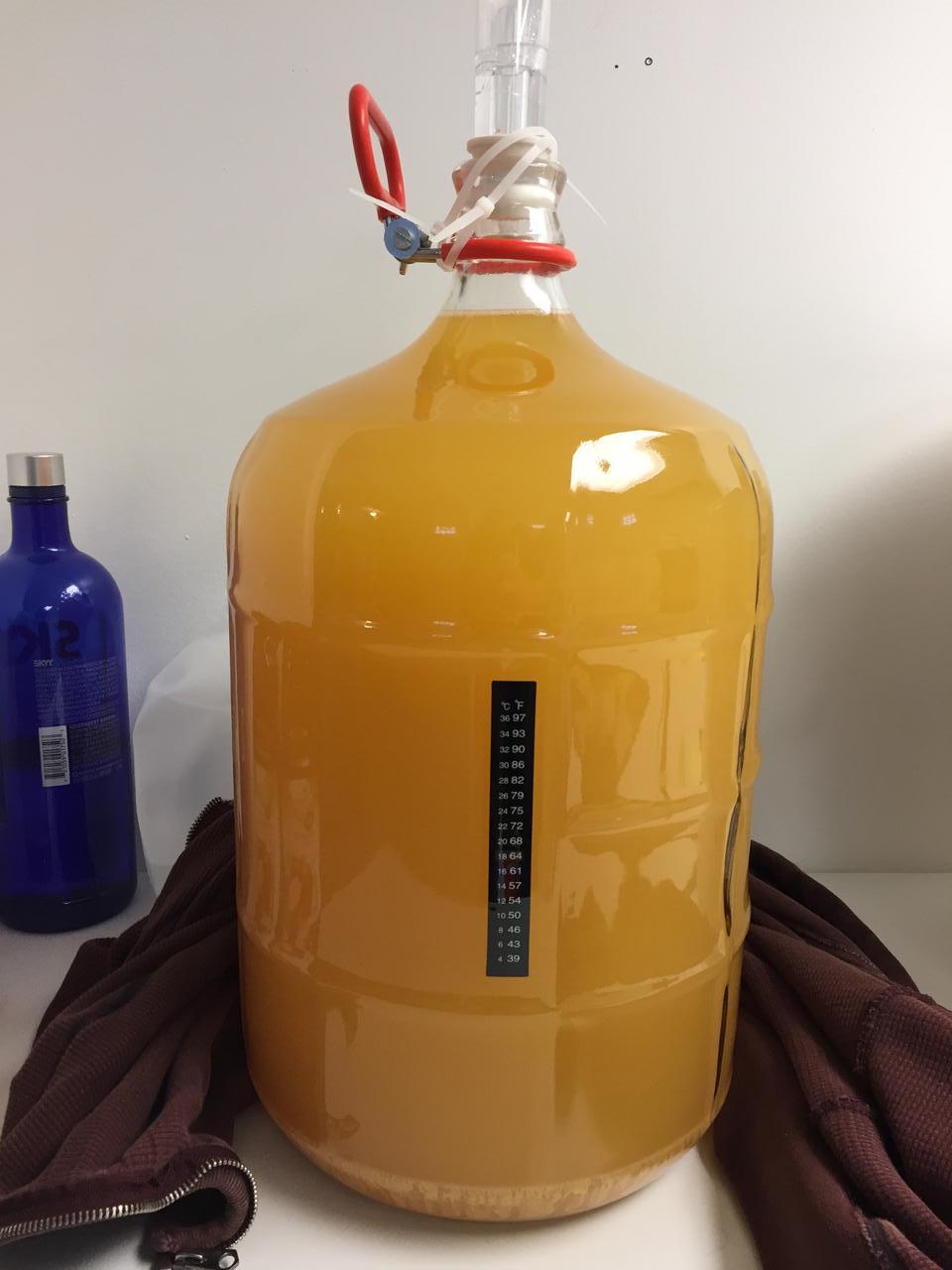
There are lees on the bottom:
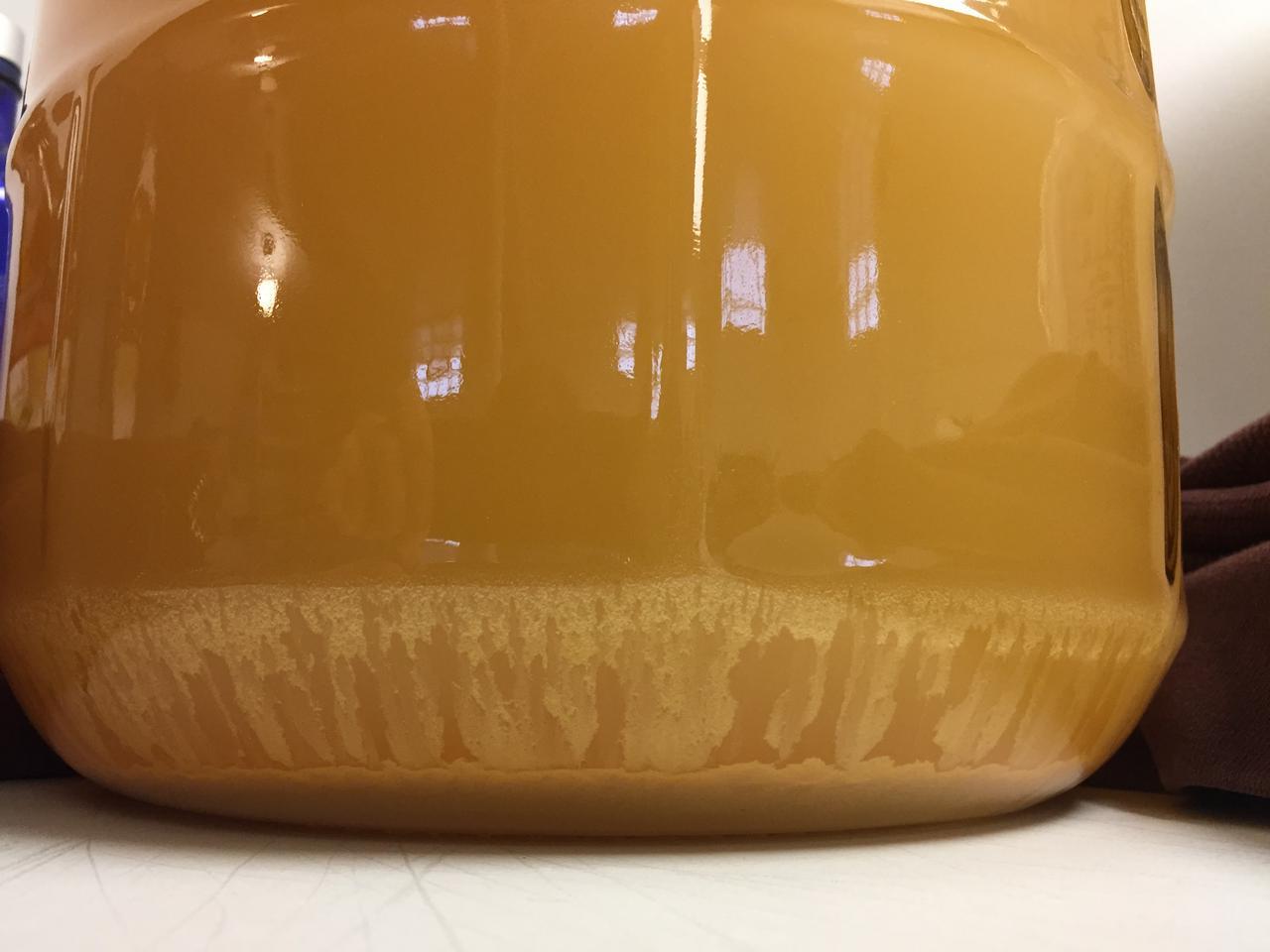
I'm getting ready to bottle it, but I noticed there's still some activity going on. It's cloudy (which is fine, I didn't add any pectin enzyme and I don't mind a cloudy cider) but there's also a fair amount of bubbling going on, I'm seeing "trails" from the bubbles as they rise, and there are bubbles in the neck.
Bubbles at neck:
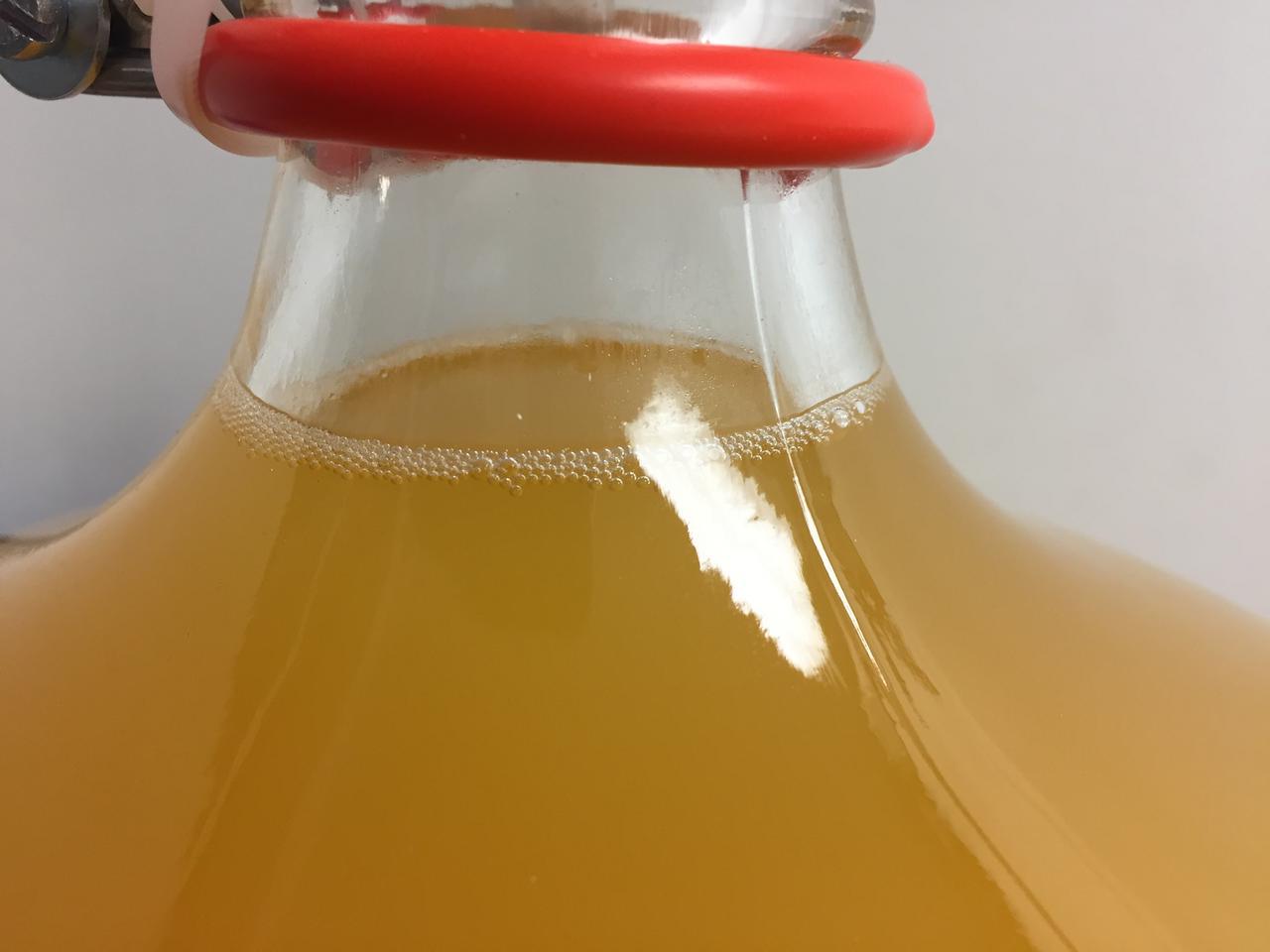
Bubbles and "trails" which you can kind of see:
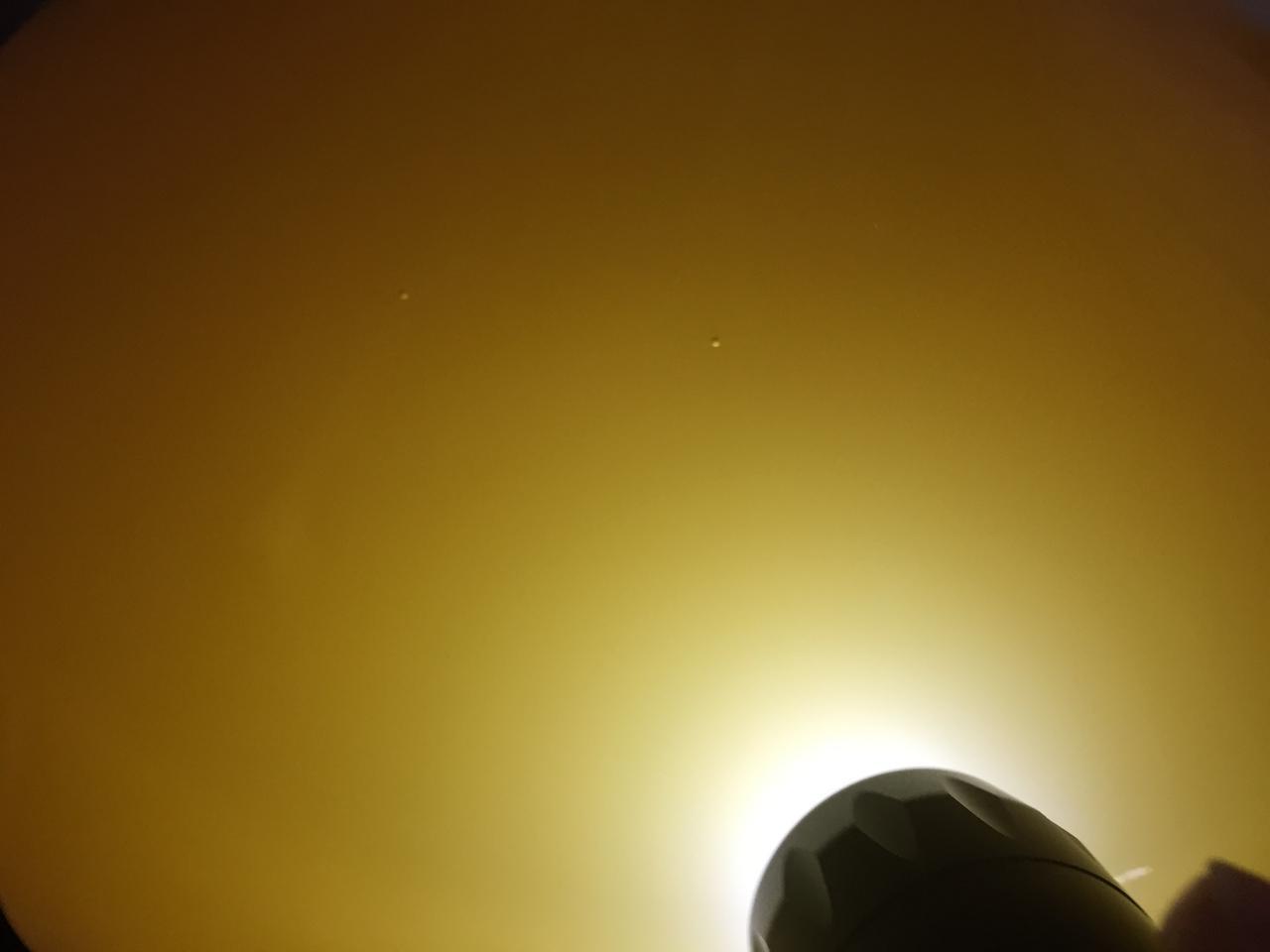
From searching on here and elsewhere, it seems like the cider may be undergoing MLF. If that's the case, should I leave in it secondary for another month or so? I do plan to let it bottle condition for 2-3 months, so I'm assuming it would continue in the bottles.
If it's not an issue to bottle it at this stage I'd like to. It's warming up and I'm going to be dedicating a lot more time to my other hobby - automotive stuff - for the next few weeks to get ready for when the weather breaks.
Or do the "trails" mean there's still a lot of yeast in suspension, and I need to continue the secondary fermentation?
Thanks!
It's appearance today is basically the same as when I racked it:

There are lees on the bottom:

I'm getting ready to bottle it, but I noticed there's still some activity going on. It's cloudy (which is fine, I didn't add any pectin enzyme and I don't mind a cloudy cider) but there's also a fair amount of bubbling going on, I'm seeing "trails" from the bubbles as they rise, and there are bubbles in the neck.
Bubbles at neck:

Bubbles and "trails" which you can kind of see:

From searching on here and elsewhere, it seems like the cider may be undergoing MLF. If that's the case, should I leave in it secondary for another month or so? I do plan to let it bottle condition for 2-3 months, so I'm assuming it would continue in the bottles.
If it's not an issue to bottle it at this stage I'd like to. It's warming up and I'm going to be dedicating a lot more time to my other hobby - automotive stuff - for the next few weeks to get ready for when the weather breaks.
Or do the "trails" mean there's still a lot of yeast in suspension, and I need to continue the secondary fermentation?
Thanks!












![Craft A Brew - Safale S-04 Dry Yeast - Fermentis - English Ale Dry Yeast - For English and American Ales and Hard Apple Ciders - Ingredients for Home Brewing - Beer Making Supplies - [1 Pack]](https://m.media-amazon.com/images/I/41fVGNh6JfL._SL500_.jpg)















































